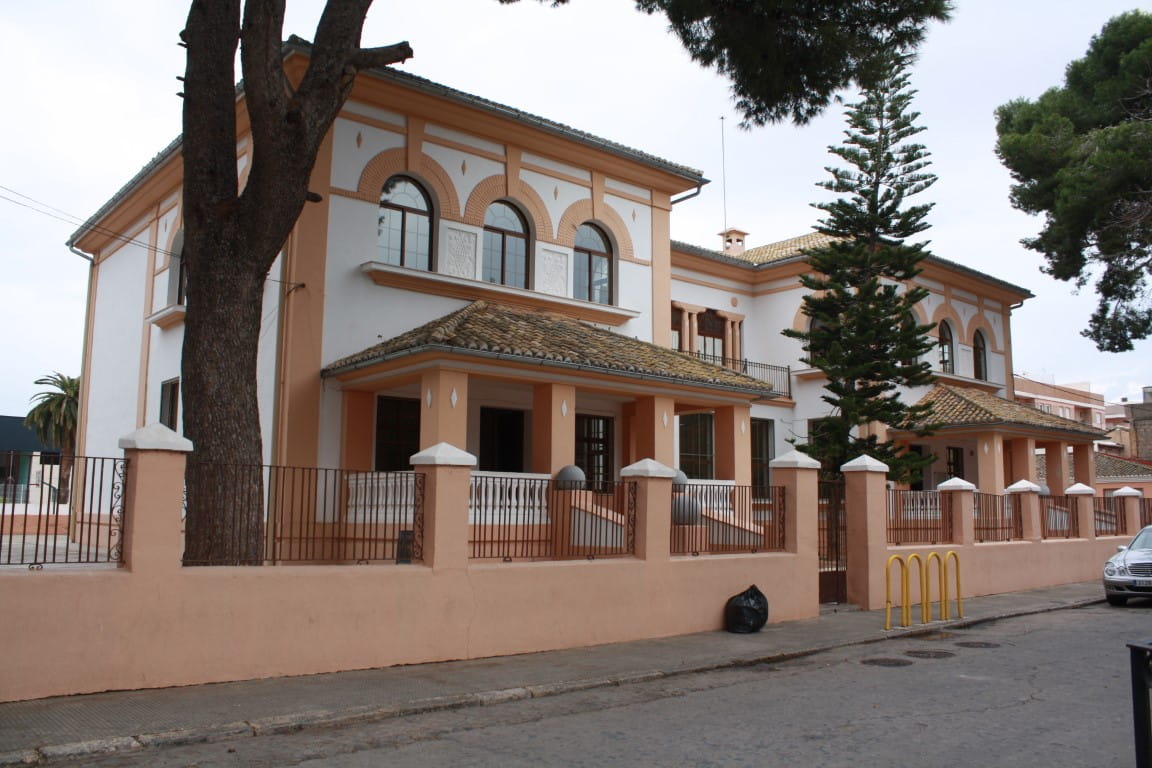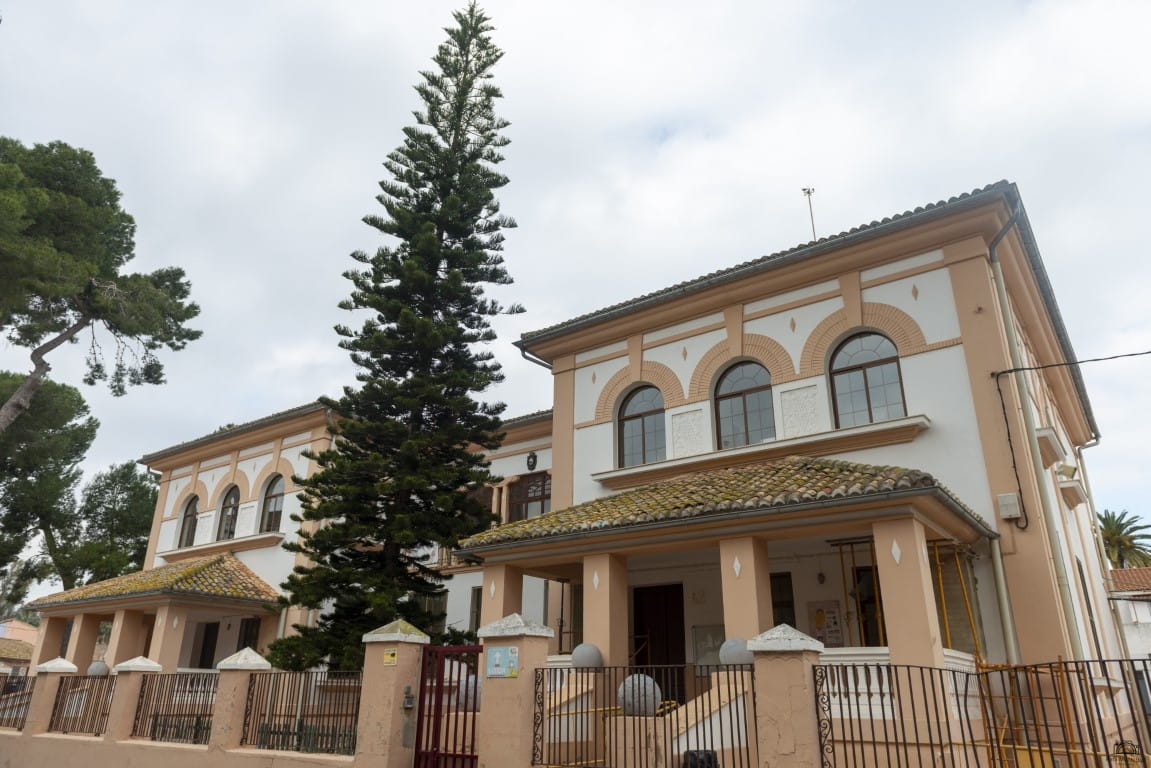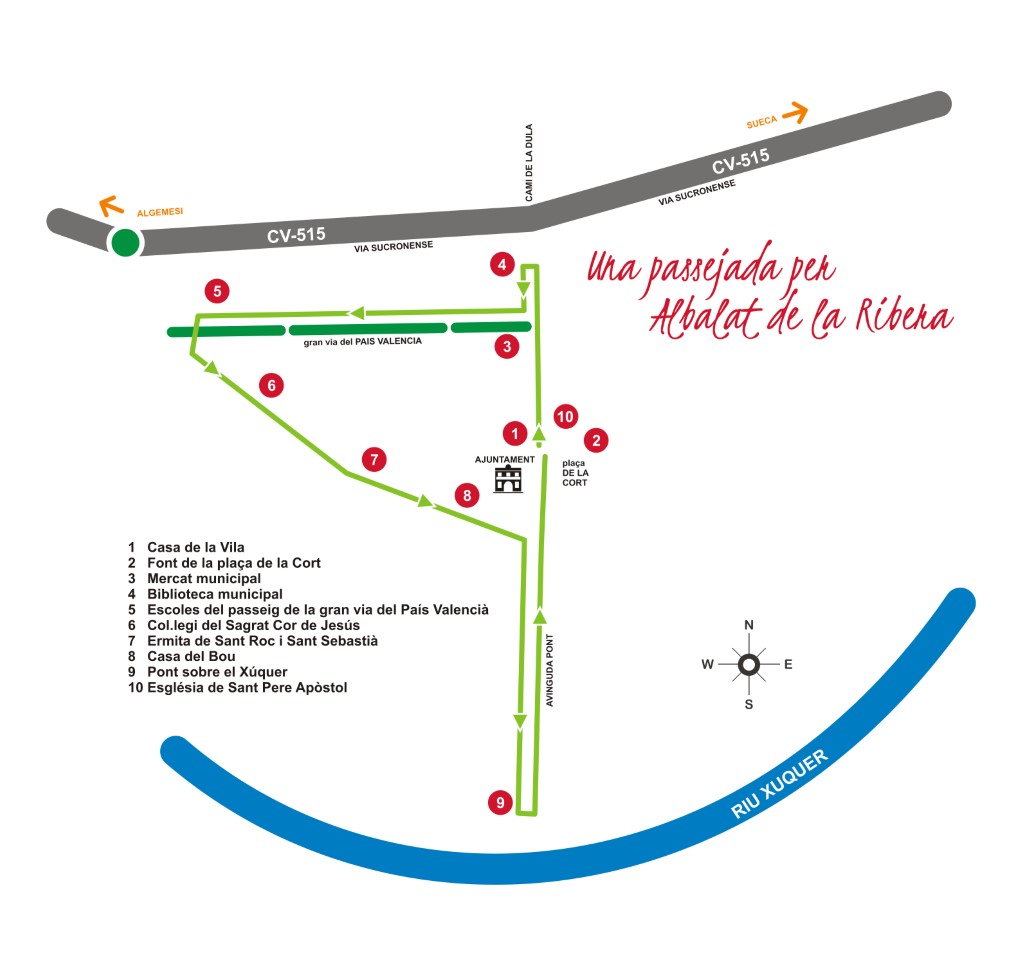The Schools of the ‘Passeig de la Gran Via del País Valencià’
In the 1920s and 1930s the public schools were built, the ground plan is an inverted one – a typology repeated in numerous schools of the period – with two entrance porticoes and large lintel windows on the ground floor, which on the first floor become semicircular arches with a powerful tiled frame, between which there is an interesting decoration with Art Deco reliefs. A balcony is built in the central body of the first floor, which also has an interesting art deco decoration, with pairs of pillars supporting large corbels, between which there are large wooden doors which are still the original ones, as well as the original interior staircase and the doors to the classrooms. What detracts from the interior space is the modern intervention that added ceramic tile skirting boards. In the end it is a functional and utilitarian building, but where the decorative and architectural details are not neglected.
In 1925, the Town Council agreed to build a new school building with three classrooms for boys and three for girls, as a result of the new pedagogical and hygienic concerns, on a plot of land that the Town Council had previously acquired at the end of the Paseo de la Gran Vía, a promenade that was just opening at that time and which was the first significant urban expansion of the town. With the construction of this building, the school-hospital, which was housed in a building constructed by the town with facades on the streets of Caballeros and Castell, was replaced. The Town Council received the works on 11th June 1931.
The architect José Corts Botí (1895-1961) was the author of the building, and he was also responsible for several school groups in Anna and El Puig, as well as the Charity House of València, among other buildings. In his buildings we can see a studied functional, consistent and utilitarian organisation, without neglecting the details.





